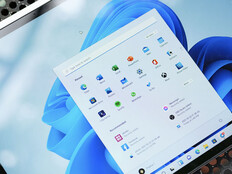Factors Driving Interest in Application Modernization for Healthcare
Brendan Fowkes, global industry technology leader for healthcare at IBM, points to three motivating factors for application modernization:
- Consumers are demanding more streamlined engagements. These are driven by data that, historically, hasn’t been readily extracted from stand-alone systems.
- Monolithic clinical, claims and operational systems running on-premises aren’t nimble. Service and maintenance costs only increase over time, and it becomes increasingly difficult to find someone with the experience to fix them.
- Regulations such as the Centers for Medicare & Medicaid Services Interoperability and Prior Authorization Final Rule demand data-sharing workflows that legacy systems struggle to support.
Organizations are also looking to make applications more adaptable and resilient, Roth says. That’s often difficult with mission-critical EHR and imaging systems that have been highly customized. The intentions may be good, as customization can improve performance and meet specific business needs; however, she says, “the more any system is customized, the harder it is to update, migrate, extend and secure.”
The Key Phases of an Application Modernization Strategy
Generally, there are four steps to application modernization.
Assess applications against modernization goals and develop a roadmap that will help manage expectations of what applications will be updated when — and which may need to be sunsetted. “Any organization can reap the benefits of adopting a modernization roadmap,” says Chuck DeVries, senior vice president and technology officer at Vizient. “Staffing, cost implications, contracting and even security and compliance are made easier by having a roadmap.”
Amid application assessment, Fowkes notes two important considerations. One is the link between modernization and sustainability as applications move to more efficient cloud-based servers. The other is cybersecurity. “You might have an application running software underneath that’s been unsupported for three years. Do you even know where the holes are?” he says.
Migrate applications to the cloud. This includes mission-critical applications, Roth says. Forrester research commissioned by Microsoft indicates that organizations report better security, performance and agility when these applications migrate off-premises. Organizations also find it easier to implement new features when applications run in the cloud, in part because microservices allow engineering teams to build, test and deploy components independently.












